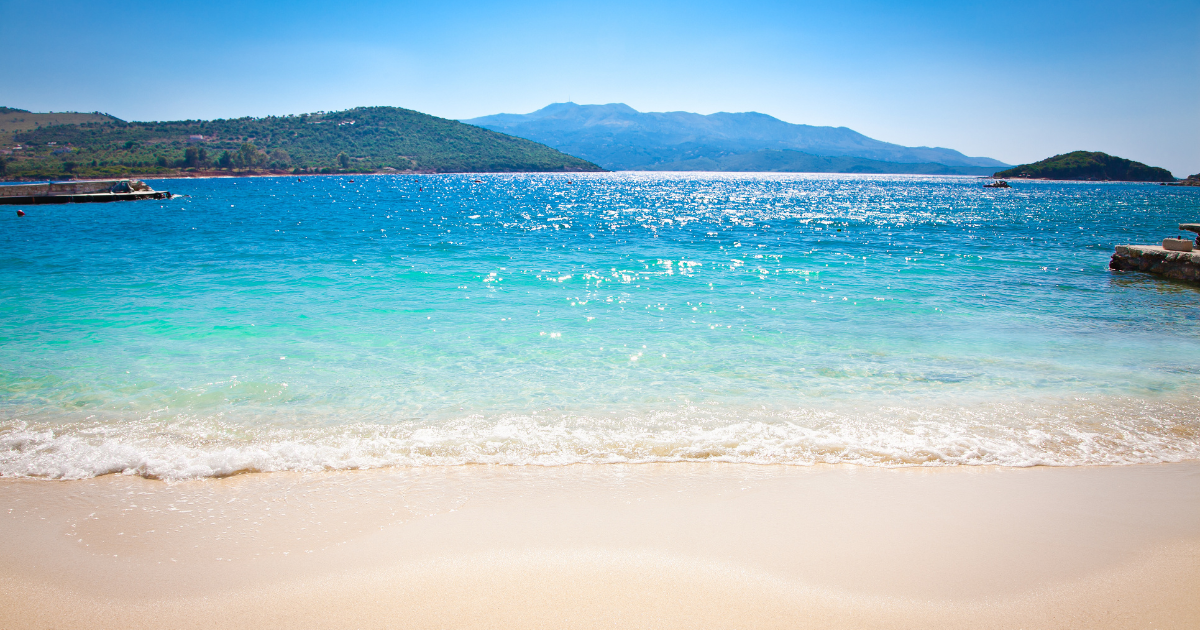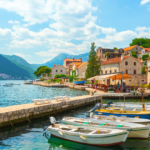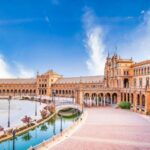Last Updated on March 21, 2024 by Rikki
Join me as I recount our scenic drive from Algarve to Évora as I uncover the hidden gems of this historic city. Located 80 miles east of Lisbon, Évora is a UNESCO World Heritage Site with a rich history influenced by Celtic, Roman, Moorish, and Portuguese cultures.
Our day trip allowed us to explore the city’s captivating landmarks, stroll through charming streets, indulge in local cuisine, and discover the unique Chapel of Bones.
Key Takeaways:
- Évora is a UNESCO World Heritage Site with a rich history influenced by various cultures.
- The bus is a convenient mode of transportation for this day trip, offering picturesque views of the countryside.
- Must-visit landmarks in Évora include the Chapel of Bones, the Roman Temple, and the Cathedral of Évora.
- The main town square, Praça do Giraldo, provides a vibrant atmosphere with open-air cafes.
- Évora’s charming streets, courtyards, and squares offer leisurely exploration opportunities.
- Don’t miss the opportunity to indulge in the local cuisine, especially dishes featuring Black Iberian Pork.
- End the trip with a visit to the picturesque Évora Cemetery, known for its above-ground marble vaults.

Planning Your Journey from the Algarve: Faro to Evora
Planning the journey from Algarve to Évora required considering various transportation options and travel times. Whether I was starting in Faro or any other city in the Algarve region, I had a few choices: hiring a car, taking a bus, or catching a train. Each mode of transportation has its own advantages and considerations.
If I decided to hire a car, we would have the flexibility to explore Évora and its surrounding areas at our own pace. The journey typically takes around 2 hours, depending on the traffic and route taken. I also kept in mind that there might be toll roads along the way, so I was prepared with some cash or a credit card for the toll fees.
If I preferred to sit back and enjoy the scenic views, taking a bus was a convenient option. Several bus companies offer direct routes from Algarve to Évora, with estimated travel times ranging from 2 to 3 hours. The bus terminals were usually located in the city center, making it easy to start my exploration of Évora right away.
Another alternative was taking a train. While there wasn’t a direct train route from Algarve to Évora, I could make a transfer to a nearby station, such as Lisbon or Beja. The total travel time could range from 3 to 4 hours, depending on the connection. Trains are known for their comfort, and the opportunity to enjoy the beautiful Portuguese countryside during the journey.
| Transportation Option | Estimated Travel Time | Advantages |
|---|---|---|
| Hiring a car | Around 2 hours | Flexibility and ability to explore at your own pace |
| Taking a bus | 2 to 3 hours | Convenience and direct routes from Algarve to Évora |
| Taking a train | 3 to 4 hours | Comfort and scenic views of the Portuguese countryside |
We decided to opt for hiring a car to take in the countryside and towns along the way. Once we arrived in Évora I found that most of the attractions were within walking distance from the city center. This made it easy to explore the treasures Évora holds at our leisure and immerse ourselves in Évora’s rich history and culture.
Exploring Évora’s Historic Sites and Landmarks
Évora is a treasure trove of historic sites and landmarks, including the impressive Roman Temple, the eerie Chapel of Bones, and the majestic Cathedral of Évora. These iconic attractions offered a glimpse into the city’s rich history and cultural heritage.
| Attraction | Description |
|---|---|
| Roman Temple | The Roman Temple of Évora, also known as the Temple of Diana, is one of the best-preserved Roman structures on the Iberian Peninsula. Erected during the 1st century AD, this Corinthian-style temple stands as a testament to the Roman occupation of Évora. |
| Chapel of Bones | The Chapel of Bones, or Capela dos Ossos, is a macabre yet fascinating site that showcases the remains of approximately 5,000 individuals. This chilling chapel was built in the 16th century by Franciscan monks with the intention of reminding visitors of the transience of life. |
| Cathedral of Évora | The Cathedral of Évora, also known as the Sé de Évora, is an architectural masterpiece that dominates the city’s skyline. Built between the 12th and 13th centuries, this Gothic cathedral boasts intricate details, beautiful stained glass windows, and breathtaking views from its towers. |
Aside from these notable landmarks, Évora’s city walls offered a glimpse into its medieval past and provided a scenic backdrop for exploration. Strolling along these ancient fortifications allowed me to appreciate the city’s unique charm and panoramic views.
Places to Visit in Évora
- Évora Museum
- Giraldo Square
- Igreja de São Francisco
- University of Évora
“Évora is a city that truly captures the essence of Portugal’s rich history and cultural identity. Its historic sites and landmarks, such as the Roman Temple, the Chapel of Bones, and the Cathedral of Évora, offer a captivating journey through time.” – Rikki
Exploring Évora’s historic sites and landmarks was like stepping back in time, immersing myself in the captivating stories of the city’s past. From Roman ruins to eerie chapels and magnificent cathedrals, Évora had it all. I embarked on a journey of discovery and let the hidden treasures of this UNESCO World Heritage Site amaze me.
Exploring Évora’s Charming Streets and Squares
I lost myself in the charm of Évora as I wandered its cobblestone streets, visited the vibrant Praça do Giraldo, and discovered the hidden courtyards and squares that made this town so enchanting.
The Alentejo region’s influence was evident throughout Évora, with its picturesque streets boasting a blend of architectural styles and a rich historical tapestry. As I strolled along the cobblestone pathways, I was transported back in time, surrounded by charming buildings and colorful façades.
Praça do Giraldo, the main town square, lies at the heart of Évora and is a bustling hub of activity. Here, we relaxed at one of the many open-air cafes, soaked in the lively atmosphere, and admire the exquisite water fountain that takes center stage. It’s the perfect spot to sip a coffee, people-watch, and soak up the town’s vibrant energy.
Discover Hidden Gems
Évora is also known for its hidden courtyards and squares, tucked away from the main thoroughfares. These tranquil spaces offer a peaceful retreat from the bustling streets.

I stumbled upon a quaint street adorned with colorful tiles and flowers, leading to a small square surrounded by charming houses with blooming flower pots. These hidden gems provide the perfect opportunity to pause, reflect, and appreciate the beauty of Évora.
| Highlights | Description |
|---|---|
| Charming Streets | The cobblestone streets of Évora are a delight to explore, offering a glimpse into the town’s rich history and architectural heritage. |
| Praça do Giraldo | The lively main square is a must-visit, with its open-air cafes, vibrant atmosphere, and stunning water fountain. |
| Courtyards and Squares | Discover the hidden courtyards and squares scattered throughout Évora, offering a peaceful retreat and charming surprises. |
As we explored Évora’s charming streets and squares, I took my time to appreciate the town’s unique character and soak in the centuries of history that surround me. Whether it’s stumbling upon a hidden courtyard or savoring the atmosphere of Praça do Giraldo, Évora promises an enchanting experience that will leave a lasting impression.
Indulging in Évora’s Local Cuisine and Farewell
No visit to Évora is complete without savoring the flavors of the Alentejo region, such as the renowned Black Iberian Pork. The Alentejo region in Portugal is known for its delicious culinary traditions, and Évora is the perfect place to experience them firsthand.
One of the must-try dishes in Évora is the Black Iberian Pork, a specialty of the region. This succulent and flavorful meat comes from free-range pigs that roam the oak forests of the Alentejo, resulting in a unique and rich taste. It can be enjoyed grilled, roasted, or in traditional dishes like “Feijoada,” a hearty bean stew, the Black Iberian Pork is sure to tantalize my taste buds.
After indulging in the local cuisine, we took a moment to visit the serene Évora Cemetery. This picturesque cemetery is known for its above-ground marble vaults, creating a peaceful and contemplative atmosphere.
Local Cuisine Recommendations

- Visit a traditional restaurant in Évora and try the famous Alentejo dish, “Migas.” Made with bread, olive oil, garlic, and various ingredients like pork, clams, or vegetables, this dish represents the simple and comforting gastronomy of the region.
- Indulge in some of the local wines from the Alentejo region, known for their quality and unique characteristics. The region produces a variety of red, white, and rosé wines that perfectly complement the flavors of the local cuisine.
- Don’t miss the opportunity to try “Sericaia,” a delicious traditional dessert from Évora. This egg and cinnamon pudding is a delightful way to end your culinary journey through the city.
As we bid farewell to Évora, I took with me the memories of the flavors and experiences that made this visit unforgettable. The Alentejo region’s culinary delights and the serene beauty of the town have left a lasting impression of Évora and hold a special place in my heart.
If you enjoyed our journey through Évora’s historic wonders, you’ll love exploring the Algarve next! Dive into my previous article to discover the stunning beaches and charming towns of this sunny region. Don’t miss out; read it here.
| Dish | Description |
|---|---|
| Black Iberian Pork | A specialty of the Alentejo region, this succulent meat is known for its rich flavor, thanks to the free-range pigs that roam the oak forests. |
| Migas | A traditional Alentejo dish made with bread, olive oil, garlic, and various ingredients like pork, clams, or vegetables, representing the simple and comforting gastronomy of the region. |
| Sericaia | A delicious traditional dessert from Évora, made with eggs and cinnamon, providing the perfect sweet ending to your culinary journey. |
Conclusion
Embarking on a drive from Algarve to Évora offers a scenic journey filled with historic sites, charming streets, and a chance to immerse myself in the rich cultural heritage of this captivating city.
The trip begins with a picturesque drive through the Alentejo region, where cobblestone streets and inviting courtyards set the stage for exploration. As we arrived in Évora, its hidden treasures unfolded before us, showcasing a history that spans centuries and influences from the Celtic, Roman, Moorish, and Portuguese civilizations.
During our 6-hour exploration, I discovered breathtaking landmarks such as the Chapel of Bones, a unique sanctuary adorned with countless bones and skulls, and the Roman Temple of Évora, a testament to the grandeur of the Roman Empire. I also marveled at the architectural masterpiece that is the Cathedral of Évora, the largest medieval cathedral in Portugal, with its awe-inspiring beauty.
The heart of the city beats in Praça do Giraldo, the main town square, where open-air cafes invite us to savor local delicacies while enjoying the vibrant atmosphere. As I wandered through the charming streets and squares, I couldn’t help but be enchanted by the Alentejo region’s influence, which permeates every corner of Évora.
Before bidding farewell to this captivating city, we made a visit to the picturesque Évora Cemetery, where above-ground marble vaults pay tribute to the city’s departed. It was the perfect ending to a day filled with history, culture, and culinary delights.
My taste buds were delighted with local cuisine, especially the dishes featuring Black Iberian Pork, a specialty of the Alentejo region. This culinary experience enhanced our journey, allowing us to fully immerse ourselves in the flavors of Évora.
As we departed Évora, I carried with me memories of its hidden treasures, its charming streets, and its rich cultural heritage. This day trip from Algarve to Évora was a truly enriching experience, and I encourage others to embark on their own adventure to discover the wonders of this captivating city.

FAQ
Q: How can I get from Faro to Evora?
A: There are several ways to get from Faro to Evora. You can drive from Faro to Evora, which takes about 2 hours and covers a distance of approximately 200 km. Another option is to take a bus from Faro to Evora, which usually takes around 3.5 to 4 hours.
Q: What is the best way to get to Evora from Faro?
A: The best way to get to Evora from Faro depends on your preferences. If you prefer convenience and flexibility, driving from Faro to Evora may be the best option. However, if you prefer a more relaxing and hassle-free journey, taking a bus from Faro to Evora can be a good choice.
Q: How long does it take to drive from Faro to Evora?
A: It takes approximately 2 hours to drive from Faro to Evora. The driving distance is around 200 km.
Q: Are there any direct buses from Faro to Evora?
A: Yes, there are direct buses from Faro to Evora. You can check the bus schedules and book your tickets in advance through the bus company’s website or at the bus station.
Q: Can I do a day trip to Evora from Faro?
A: Yes, it is possible to do a day trip to Evora from Faro. The driving distance is manageable, and you can explore the main attractions in Evora within a day. However, if you have more time, it is recommended to stay overnight in Evora to fully experience the city.
Q: What are the must-visit attractions in Evora?
A: Some of the must-visit attractions in Evora include the Cathedral of Evora, Chapel of Bones, Convento de São Francisco, and Nossa Senhora da Graça Church. These places showcase the rich history and culture of Evora.
Q: Is Evora worth visiting?
A: Yes, Evora is definitely worth visiting. It is a charming and historical city with well-preserved medieval architecture. Evora offers a unique cultural experience and has been designated as a UNESCO World Heritage Site.
Q: Are there any recommended hotels in Evora?
A: Yes, there are several recommended hotels in Evora. Some of the best hotels in Evora include Convento do Espinheiro Historic Hotel & Spa, M’AR De AR Aqueduto, and Vitória Stone Hotel. These hotels offer comfortable accommodations and are conveniently located in the city center.
Q: Can I visit other nearby attractions from Evora?
A: Yes, you can visit other nearby attractions from Evora. One popular option is to visit the medieval village of Monsaraz, which is known for its historic castle and stunning views. Another option is to explore the Algarve Coast, which is famous for its beautiful beaches and coastal towns.
Q: What is the best way to explore Evora?
A: The best way to explore Evora is on foot. The city center is compact and pedestrian-friendly, allowing you to easily navigate through the charming streets and visit the main attractions. You can also take a guided tour to learn more about the history and significance of Evora.
Resources
- Évora Official Tourism Website
- Comprehensive information about Évora’s attractions, accommodations, and events.
- Municipality of Évora Website
- Provides information about the city’s services, cultural activities, and heritage.
- UNESCO World Heritage Centre: Historic Centre of Évora
- Detailed information regarding the historic and cultural significance of Évora.
- Alentejo Regional Tourism Website
- Covers Évora and the surrounding Alentejo region, highlighting regional attractions.


















